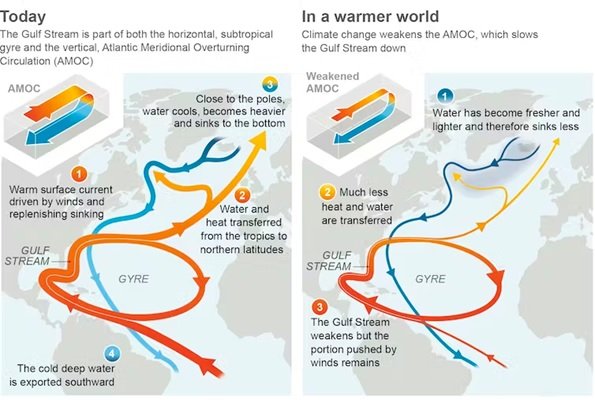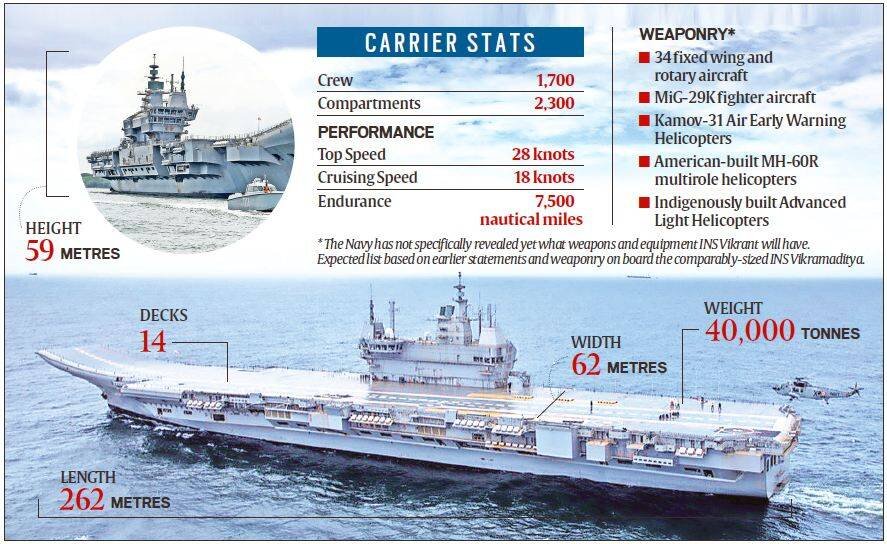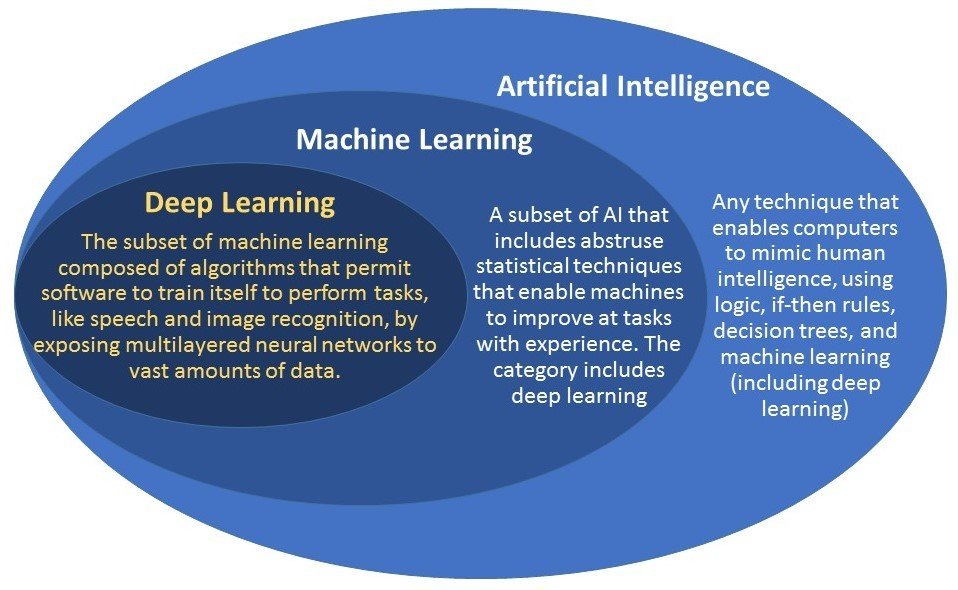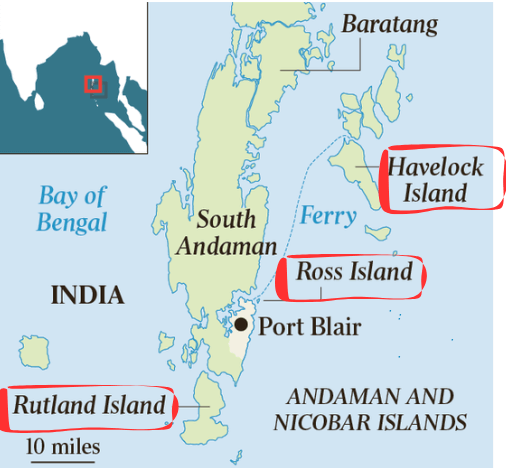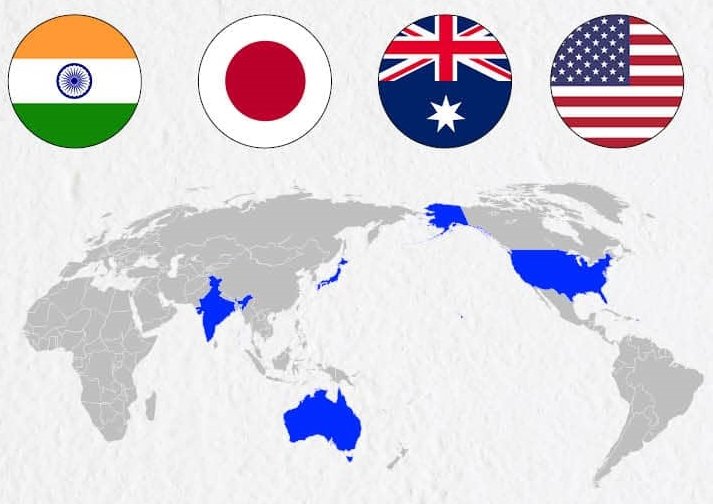
Current Affairs February 01, 2024: Rising Tension in Korean Peninsula, Interim Budget, Deputy Chief Minister, RBI Action on Paytm Payment Bank, India increases its tally of Ramsar Sites, Neuralink, Corruption Perception Index 2023, Exoplanet GJ9827d
Subscribers of "Current Affairs" course can Download Daily Current Affairs in PDF/DOC
Subscribe to Never Miss an Important Update! Assured Discounts on New Products!
Must Join PMF IAS Telegram Channel & PMF IAS History Telegram Channel
{GS2 – IR – Asia} Rising Tension in Korean Peninsula
- Context (TH): Provocative moves by North Korea and the rebuttals by South Korea are on the rise.
Korean Peninsula

- 38th parallel (38° N) roughly demarcates North Korea and South Korea.
- Potsdam Conference (1945), near the end of World War II, chose it as the bifurcation border.
Recent aggravations
- North Korea has rescinded its national objective of Korean reunification.
- It has formally categorised South Korea as an adversarial state.
- The supreme leader of North Korea, Kim Jong Un, ordered the rewriting of the North Korean constitution to reflect a shift in the regime’s thinking.
- The closure of offices related to reunification and the destruction of Pyongyang’s reunification landmark monument raises the alarm.
- North Korea tested multiple types of missile systems in January 2024.
Historical Context
- Japan occupied Korea between 1910- 1945.
- The bifurcation of the Korean Peninsula in the Yalta Conference (1945) was agreed upon by Allied powers as the result of the defeat of imperial Japan in World War II.
- Ideological Cold War divide due to the influence of Soviet Union on North and U.S. over South Korea.
- Korean War (1950-53): As a result of the North’s attempt to take over the South, war broke out.
- Continued divide: Despite the cessation of active conflict and the end of the Cold War, the North authoritarian regime supported by China and South Korean liberal democracy is still in conflict.
- North Korea’s nuclear ambitions are a bone of contention in the relations.
Denuclearisation of North Korea
- 1994-2002: The U.S. signed an “Agreed Framework” with North Korea to halt its nuclear programme in return for nuclear energy.
- Exit from the nuclear non-proliferation treaty in 2003 by North Korea.
- Six-party talks involving the two Koreas, China, Japan, Russia, and the U.S. resulted in North Korea pledging to forego its nuclear ambitions.
- Nuclear Test 2006: North Korea conducted a nuclear test in 2006 with questionable yield.
- Breakdown of talk: In 2009, talks broke down, leading to a consistent increase in tests by North Korea.
- Failed attempt at talks: Various attempts at “denuclearisation talks” between the US and North Korea in 2018-19 have failed.
North Korea: A perceived global threat
- Significant military developments: It has developed, tested and deployed delivery vehicles, launchers and satellites, arguably with intercontinental range.
- Provocative actions: Military drills, shelling on South Korean islands and threats of nuclear attack are threats to global peace.
- US support to South Korea: With the US military alliance and missile defence system, a confrontation cannot be ruled out.
- Cyber-attacks across the globe have been traced to North Korea multiple times.
{GS2 – IR – Middle East} Drone Attack in Jordan
- Context (IE): US military servicemen were killed in a drone attack on their outpost in Jordan.
- The strikes targeted Tower 22, a US military outpost (a smaller version of a military base) in Jordan.
Tower 22

- Tower 22 (Jordan) is near the Al Tanf garrison (Syria) of the US troops.
- It is located near the demilitarized zone on the border between Jordan and Syria.
- The Iraqi border is only 10 kilometres (6 miles) near Rukban region.
- Rukban is an arid, remote area in northeast Jordan adjacent to the Jordan–Syria border and close to the tripoint with Iraq.
- Radical Iran-backed militant groups, Islamic Resistance of Iraq (IRI), operating in Syria and Iraq, claimed responsibility for the strikes.
Jordan
- Jordan is bordered by Israel to its west, Saudi Arabia to its southeast, Iraq to its northeast and Syria to its north.

US Army in Jordan
- Jordan’s army is one of the largest recipients of the US’s foreign military financing.
- The US Army was stationed during the Syrian civil war in the early 2010s.
|
Islamic Resistance of Iraq
- “Islamic Resistance of Iraq” is believed to be a front for Iranian-backed factions within an umbrella of militias known as Hashd al-Shaabi.
- These groups back Iran as part of an anti-Western and anti-USA stance.
- Earlier, it claimed responsibility for a drone attack on Harir Air Base in Iraqi Kurdistan.
{GS2 – MoE – Schemes} Ek Bharat Shreshtha Bharat Program
- Context (PIB): Students engaged in the Auroville Exposure tour as part of the Ek Bharat Shreshtha Bharat program.
Ek Bharat Shreshtha Bharat program
- It was announced by the prime minister in 2015 on the birthday of Sardar Vallabhbhai Patel.
- Aim to promote engagement amongst the people of different States/UT.
- It is an initiative of the Ministry of Education.
- Every State and UT in the country would be paired with another State/UT for some time. During this, they would carry out a structured engagement with one another in the spheres of language, literature, cuisine, festivals, cultural events, tourism, etc.
Auroville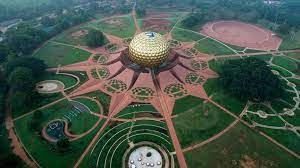
|
{GS2 – MoHFW – Schemes} AMRIT Pharmacies
- Context (IE): South Eastern Coalfields Ltd will open AMRIT Pharmacies in its hospitals.
- Amrit pharmacies offer generic and life-saving drugs in one place.
- They provide medicines, implants, surgical consumables, etc., for common diseases as well as critical conditions at highly subsidised rates.
- The initiative aims to reduce medical reimbursements by supplying medicines directly to employees.
AMRIT (Affordable Medicines and Reliable Implants for Treatment)
- Nodal Ministry: Health and Family Welfare.
- Launched: In 2015.
- Beneficiaries: Patients suffering from cancer and heart diseases (non-communicable diseases).
- Features: These pharmacies offer more than 5,200 drugs, implants, surgical disposables, and other consumables at average discounts of up to 60% of the maximum retail price.
- It is being implemented through Mini-Ratna PSU, HLL Lifecar Ltd.
{GS2 – Polity – IC – Parliament} Interim Budget
- Context (IE): An Interim budget is presented by the Finance Minister.
- An Interim Budget is a temporary financial plan covering government expenses until a new government takes over at the central level.
- It seeks parliamentary approval for 4 months’ expenses, including salaries and ongoing programs, without tax changes.
- It is presented when there is insufficient time for Parliament to approve various grants and debate changes in taxation before the fiscal year begins.
- It’s widespread in election years, allowing the new government to present a full budget.
|
Difference between Interim and Union Budget
| Parameter | Interim Budget | Union Budget |
| Presented when | The government’s term is ending, or there is a transition in power | Annually, at the beginning of the financial year |
| Presented by | The outgoing government | The ruling government of the day |
| Focuses on | Essential expenses | New policy initiatives, announcements, and changes in taxation and expenditure |
| Covers | limited to the expenditure required to run the government until the new government presents a full budget | All expenditures planned for the entire fiscal year, including developmental projects and ongoing schemes |
| Parliamentary approval | Usually, it gets for a few months or until the full budget is presented. | Requires for the entire fiscal year |
| Based on | Estimates for the upcoming financial year | Covers the entire financial year, starting from April 1 to March 31 |
| Meant for | The smooth functioning of the government until a new government presents a full budget. | Outlining the reigning government’s financial plans for the entire fiscal year. |
{GS2 – Polity – IC – State Legislature} Deputy Chief Minister
- Deputy CM is a political post, and it’s not a constitutional post like Vice President of India.
- Anugrah Narayan Sinha from Bihar was the first to hold the post of deputy CM post-Independence.
- As of Feb 2024, 14 states in India have the post of Deputy CM.
Structure of the Post of Deputy CM
- Art 163 & 164 deals with the appointment of the CM and state’s council of ministers. However, it does not explicitly mention the Deputy Chief Minister’s post.
|
- Appointment and removal– The appointment and removal of Deputy CM is entirely at the discretion of the Chief Minister.
- The Chief Minister can appoint more than one Deputy CM.
- For example, Maharashtra has two Deputy CMs, and Andhra Pradesh has five Deputy CMs.
- Tenure – There is no fixed tenure, as the Chief Minister may reshuffle the portfolio or remove a deputy CM at any point in time.
What are the powers of the Deputy CM?
- Rank-Deputy CM rank is equivalent to the rank of a cabinet minister in the state and has the same pay and perks as Cabinet Minister.
- The post is considered to be the second highest-ranking executive officer of the State COMs.
- Portfolios– It holds relatively more minor portfolios than the CM, and the actual importance of the Deputy CM is based on the portfolio he holds.
- Financial Powers– The deputy CM does not enjoy any specific financial power and holds the same financial powers as other cabinet ministers.
- Even for his portfolio, the Deputy CM has to get the approval of the CM for any expenditure over and above the allocated budget.
- Deputy CM has no authority to see the files earmarked for CM, and the portfolios allotted to Deputy CM are routed to CM via Deputy CM.
Significance of Deputy CM
- Reduce the incidents of Anti-Defection by acting as a bridge between the ruling party and its allies, hence bringing more political stability to the coalition government.
- It reflects the political compulsion and importance of the individual/party holding the post.
- Better representation of the community, which enhances the public’s trust in the government.
- A post to accommodate coalition parties or when there is no single leader who commands unchallenged authority in the party in power and loyalty across all the key interest groups in the state
Related Concerns
- It doesn’t have constitutional backing and no clarity in its role and function; hence, it can be exploited by the Chief Minister according to his whims and fancies.
- Deputy CM is a political post that doesn’t have a limit on the number of Deputy CMs a CM can appoint, which may lead to more appeasement of coalition parties and allies.
- The deputy CM role is equivalent to the Cabinet minister; already, there is a separate cabinet minister post, which may lead to complexities in governance and administration.
Deputy Prime Minister
- Sardar Vallabhai Patel was the first deputy PM of India appointed in 1947 after independence.
- This led to the development of the post of Deputy CM in India.
- Those who subsequently held the position of Dy PM were Morarji Desai, Charan Singh, Chaudhary Devi Lal, and Lal Krishna Advani.
- Devi Lal’s appointment as Deputy PM in 1989 was challenged in court on the ground that “the oath administered to him as such was not in accordance with the prescription of the Constitution”.
S.C on Deputy PM (K M Sharma vs Devi Lal and Ors, 1990)
- Devi Lal is just a Minister like other members of the Council of Ministers, according to a statement made by the Attorney General.
- Though he has been described as Deputy Prime Minister, the description of him as Deputy Prime Minister does not confer on him any powers of the Prime Minister.
{GS2 – Social Sector – Education} National Mission for Mentoring (NMM)
- Context (TH): The National Council of Teacher Education (NCTE) aims to expand its mentor teachers from 60 to 1,000 under the National Mission for Mentoring (NMM).
National Mission for Mentoring (NMM)
- It was launched by the NCTE in 2022.
- Objective: Aligned with National Education Policy (NEP) 2020, it seeks to establish a robust group of skilled experts to mentor school teachers, facilitating their continuous professional growth.
- Mentoring Areas: Instructional Leadership Skills, Digital Education, Socio-emotional Learning, Inclusive Education, and Teachers’ Mental Health Management.
- Importance of Mentoring: Improve teacher effectiveness and retention, foster professional collaboration, and cultivate leadership skills, thereby elevating the quality of education in India.
{GS3 – Envi – Wetlands} India increases its tally of Ramsar Sites
- Context (PIB): India has increased its tally of Ramsar sites (Wetlands of International Importance) to 80 from the existing 75 by designating five more wetlands as Ramsar sites.
- Ramsar Site certificates were given away to –
- Karaivetti Bird Sanctuary, Tamil Nadu
- Longwood Shola Reserve Forest, Tamil Nadu
- Magadi Kere Conservation Reserve, Karnataka
- Ankasamudra Bird Conservation Reserve, Karnataka
- Aghanashini Estuary, Karnataka
Karaivetti Bird Sanctuary
- The Karaivetti Bird Sanctuary is a protected area located in the Ariyalur District of TN.
- This lake was declared as a sanctuary in 1999.
- Karaivetti Bird Sanctuary is one of the Important Bird Areas (IBAs) of TN.
- The sanctuary is a freshwater feeding ground for migratory water birds.
- About 200 bird species are recorded from this sanctuary.
- The sanctuary is a large irrigation tank located in the northern alluvial plains of the Kaveri River.
- Pullambadi, Kattalal canal, feeds this freshwater lake and attracts thousands of birds every year.
- It is also referred to together with another nearby tank called Vettakudi-Karaivetti Bird Sanctuary.
- It is home to migratory birds such as Bar-headed goose, Northern pintail, White Stork, Northern shoveler, Osprey and common sandpiper.
Magadi Kere Conservation Reserve / Bird Sanctuary
- Magadi Bird Sanctuary, created at the Magadi tank, is one of the biodiversity hotspots of Karnataka.
- The water of the wetland is salty and unsuitable for irrigation. Therefore, this wetland holds water even in dry years and attracts migratory waterfowl.
- The bar-headed goose is one of the birds that migrate to Magadi wetlands.
- The following bird species are also found:
- Grey Heron,
- Purple Heron,
- Comb Duck,
- Oriental Ibis,
- White Breasted Water Hen, and
- Greater Flamingo.
Longwood Shola Reserve Forest
- Longwood Shola is the only urban natural shola forest left in the Nilgiris.
- Longwood Shola is an ancient forest that has nutrient-rich soil formed over hundreds of years.
- Like other shola forests, Longwood Shola is nestled between two hills and acts as a perched aquifer, retaining the water that flows from these two hills.
- The soil is dark and has high water retention capacity. Even in case of high rainfall, the soil can absorb that water and release it in small amounts throughout the year.
- It is a relatively small patch of forest, yet of great importance to the entire Kotagiri region.
- It is a significant source of water to the nearby villages and hamlets and plays a vital role in Kotagiri’s microclimate, attracting and regulating the rainfall.
- The TN government and the Forest Department plan an eco-tourism initiative to spread awareness of the importance of the Nilgiris’ Shola forests.
- A Shola conservation centre is to be set up as part of the eco-tourism plans.
- Longwood Shola received the Queen’s Commonwealth Canopy accreditation in 2022.
|
Shola Forests
- The Shola vegetation is a tropical montane forest found in the Western Ghats, separated by rolling grasslands in high altitudes.
- Shola grasslands consist of dwarf trees growing 25-30 feet.
- In general, mountains are covered in grasslands, and trees never grow on the mountain tops. Still, Shola forests (tropical forests) at altitudes above 2000 metres of sea level are unique and curious.
- Shola tree species have one of the lowest regeneration rates. They do not get established very soon and are very sensitive to climatic change.
- Vegetation is a double-layered storey with a closed canopy, which hardly permits a single ray of sunlight to penetrate the natural vegetation.
- The Nilgiris upper region is classified as southern grassland or mountain grassland.
- Between 1973 and 2014, the Shola grasslands area saw a 66.7% decline.
- The Shola forests and associated grasslands store large quantities of water on the mountain ranges, thus serving as massive `water harvesting and storage structures.
- Many of the rivers in Kerala and Tamil Nadu originate from the Shola grasslands and are perennial.
- With the depletion of Sholas and other forests, the streams that supply water to them dry up in summer.
- They are rich storehouses of biodiversity and are also home to vibrant wildlife.
- Due to high isolation and unique climatic conditions, the Shola forests are characterised by high endemism.
- The species of plants and animals found here are native to this region, and such species cannot be found anywhere else in the world. For example – Nilgiri Tahr.
Ankasamudra Bird Conservation Reserve (ABCR)
- ABCR is about an hour from Hampi town and very near to Tungabhadra Reservoir.
- It was declared a ‘Birds Conservation Reserve’ in 2017 as per the Wildlife Protection Act, 1972.
- It has been home to a wide variety of birds, both domestic and migratory.
- There are 175 species (of birds) and even 11 species from the IUCN Red List.
- Little cormorants, Indian cormorants, great cormorants, grey herons, purple herons, and black-crowned night herons (rare for Ballari and its first record of breeding) are among the variety of birds seen nesting and breeding.
Aghanashini Estuary
- The Aghanashini River originates in the Western Ghats. It flows westward towards the Arabian Sea, and a significant part of its course flows through the forested gorges and valleys.
- The river meets the sea at Aghanashini village of Kumta taluk.
- The Aghanashini is one of the last free-flowing rivers in Karnataka: it has no significant industrial establishments, dams or townships on its banks.
- Aghanashini estuarine landforms accommodate diverse ecosystem functions and human activities but also mediate flood and erosion risks.
- The high productivity of the estuary is because the river water carries large quantities of organic materials from the forests and deposits the same in the estuary.
- The rich mangrove vegetation of the estuary plays a significant role in nutrient supply for the diverse faunal community.
- It provides shelter for birds and acts as a nursery for many species of fish and prawns.
- The rich bird community contributes to nutrient cycling through their potash and nitrogen castings.
- The constant churning and circulation of waters due to the flow of freshwater from one side and the tidal influx from the Arabian Sea oxygenates the water and circulates the nutrients.
{GS3 – IE – Banking} RBI Action on Paytm Payment Bank
- Context (IE): The RBI placed restrictions on Paytm payment bank to be effective from February 29.
- It was ordered in the wake of “persistent non-compliance and material supervisory concerns”.
- RBI barred Paytm Payments Bank from offering all its core services — including accounts and wallets.
- RBI has allowed the withdrawal or utilisation of balance amounts by customers.
Issues in Paytm
- RBI has not disclosed reasons, but KYC compliance and IT-related issues can be the concerns.
- Paytm was under RBI scrutiny for purported lack of requisite information barriers, data access to China-based entities and indirect shareholders.
- Paytm failed to address these issues over the period.
|
Payment Banks
- Payment banks are differentiated banks, unlike other banks with lesser risk as they cannot lend.
- It can take deposits up to ₹2 lakh per account, and it can issue debit cards but not credit cards.
- It can accept demand deposits only (savings and current accounts, not time deposits).
- They cannot set up subsidiaries to undertake non-banking financial services.
- Dr Nachiket Mor committee recommended setting up ‘Payments Banks’ to cater to lower-income groups and small businesses.
{GS3 – IE – Globalisation} End of the Era of Hyperglobalisation
- Context (IE): The era of hyper-globalisation seems to end.
War and Economy
- Economic impossibility: IN 1910, a book argued that the sheer extent of financial and commercial interdependence between countries made conflict futile.
- World War I (1914): The theory was proven wrong and ended the first “golden age” of globalisation.
- Between 1870 and 1914, world trade in goods surged from 9% to 16% of GDP. This was a period of internationalisation of economic and social life, referred to as the golden age of globalisation.
- World War II: In 1939, the share of merchandise trade in global GDP collapsed to 5.5%.
Theories of International Manufacturing
|
Era of Hyperglobalisation
- Between 1990 and 2008, global trade in goods soared from 15.3% to 25.2% of world GDP.
- Inclusive of trade in services, the increase was from 18.8% to 31.7%.
- In this era, China emerged as the “world’s factory” and a “mega-trader”.
- It was an era of trust, where American iPhones were produced in China, and Russia supplied 40% of European gas consumption(2021).
- Two wars reversed the trend: Protectionism (China-US trade war and semiconductor chip restrictions) and the Russia-Ukraine war reversed the trend.
- That world – “happy age”, as Keynes would have called it – came to an end in 2022 with two wars, upending the assumption of “doux commerce”.
|
{GS3 – S&T – Tech} Neuralink
- Context (IE): Elon Musk revealed that a person got a Neuralink implant recently.
Neuralink
- A technology company founded by Elon Musk in 2016.
- It is building a device designed to connect human brains directly to computers.
- The brain consists of special cells called neurons that transmit signals to other cells in the body, like our muscles and nerves.
- The electrodes of the Neuralink can read these signals, which are then translated into motor controls.
- The implant itself is called “the Link.” This coin-sized brain chip is surgically embedded under the skull, where it receives information from neural threads.
- The first Neuralink product is called “Telepathy”, it will enable users to control their phones or computers just by thinking.
- Has the potential to enhance human memory, processing speed and cognitive abilities by creating a direct interface between the human brain and digital devices.
Potential Applications/Benefits
- It can help those immobilised by paralysis regain lost communication skills.
- It may enable people with paralysis or amputations to regain a certain level of mobility.
- It can help people (unable to speak or write) to communicate with others by allowing them to control a virtual mouse or keyboard or send messages by thought.
- It can also detect changes that may indicate neurological conditions such as epilepsy, bipolar disorder, obsessive-compulsive disorder, Alzheimer’s or Parkinson’s disease.
- It can also help people improve their focus, memory, and attention by allowing them to train their brains using real-time biofeedback and other techniques.
|
{Prelims – Envi – Species} Stingless Bees
- Context (IE): Stingless bees face a threat from the extensive deforestation occurring in the Amazon forest.

- Stingless bees are native to the Amazon Forest. They differ from honeybees from Africa and Europe.
- Stingless bees don’t sting.
- Indigenous Peruvians use their honey, which has a citrusy aftertaste, as a natural medicine for upper respiratory infections.
- Additionally, it has been discovered to possess qualities such as anti-inflammatory and antimicrobial effects.
- Threats: Pesticides, climate change, competition with the honeybee and large-scale Deforestation.
{Prelims – In News} Corruption Perception Index 2023
- Context (IE): Transparency International released the annual Corruption Perceptions Index (CPI) for 2023.
- CPI lists countries by their perceived levels of public sector corruption.
- The index uses a scale of 0 to 100, where 0 is highly corrupt, and 100 is very clean.
- Top Performers: Denmark (1), Finland (2), New Zealand (3), Norway (4).
- Bottom Performers: Myanmar (162), Afghanistan (162), North Korea (172) and Somalia (180).
- In the Asian region, Singapore is at the top with 5th rank and a score of 83.
- India’s score: 39 (2023), 40 (2022)
- India’s rank: 93/180 (2023), 85 (2022)
Other observations
- Though India’s rank has improved, however, fluctuations are too small to indicate significant change.
- The report claimed that passage of the telecommunication bill would also narrow the civic space.
- Despite top-scoring Western Europe and the European Union, the average score dropped to 65.
- This drop is attributed to weakened checks and balances and the erosion of political integrity.
- Reports questioned the effectiveness of punishment-based anti-corruption crackdown in China.
Transparency International
|
{Prelims – In News} Exoplanet GJ9827d
- Context (HT): NASA’s Hubble Space Telescope detects smallest exoplanet with water.
- GJ9827d, which is approximately twice Earth’s diameter, has the potential of being a planet with water-rich atmospheres.
- It is located 97 light years away from Earth.
- The exoplanet belongs to the category of super-Earths in the category of exo-planets.
- Every 6.2 days, the exoplanet completes one orbit around a red dwarf star, GJ 9827, located in the constellation Pisces.
|
Red Dwarf Star
|
Exoplanet
- Exoplanets are planets that orbit other stars and are beyond our solar system.
- The word “exoplanet” comes from the term “extrasolar planet”, which means a planet beyond the influence of our star.
- Exoplanets come in a host of different sizes. They can be gas giants bigger than Jupiter or as small and rocky as Earth.
- They are also known to have different kinds of temperatures — boiling hot to freezing cold.
- Discovering exoplanets is tough as they are small and hard to spot around their bright host stars. Scientists rely on indirect methods, such as the transit method, which is “measuring the dimming of a star that happens to have a planet pass in front of it”.
- The first possible evidence of an exoplanet was noted in 1917, but it wasn’t recognized as such. The first confirmed detection of an exoplanet occurred in 1992.
- According to NASA, to date, more than 5,000 exoplanets have been discovered.
Types of Exoplanets

{Prelims – In News} World Leprosy Day
- In India, it is observed on 30th January, coinciding with the death anniversary of Mahatma Gandhi.
- Objective: To raise public awareness about the stigma associated with Leprosy and educate people that it is a disease spread by a type of bacteria and can be easily cured.
For details on Leprosy, visit >Leprosy




![PMF IAS Environment for UPSC 2022-23 [paperback] PMF IAS [Nov 30, 2021]…](https://pmfias.b-cdn.net/wp-content/uploads/2024/04/pmfiasenvironmentforupsc2022-23paperbackpmfiasnov302021.jpg)


